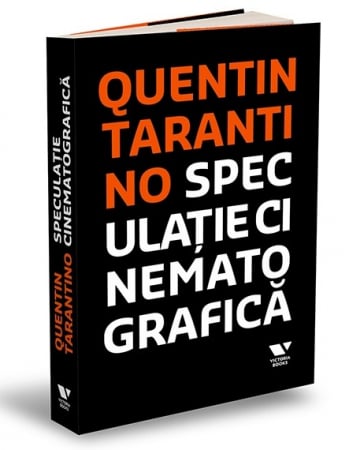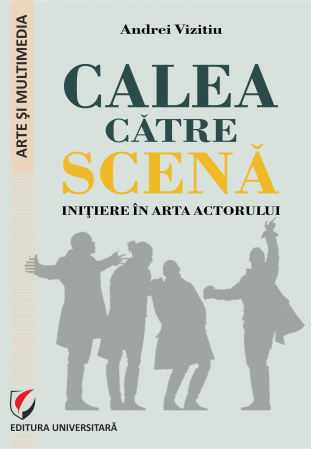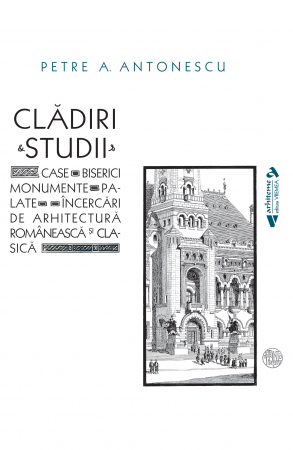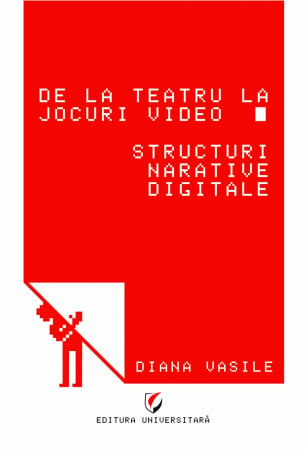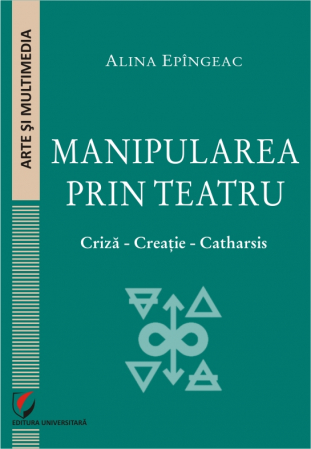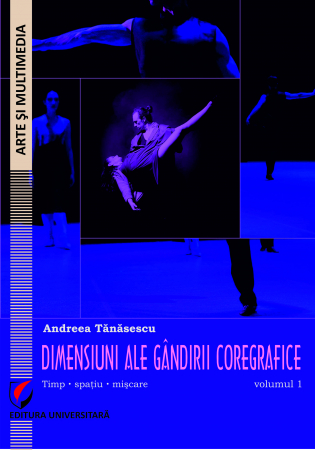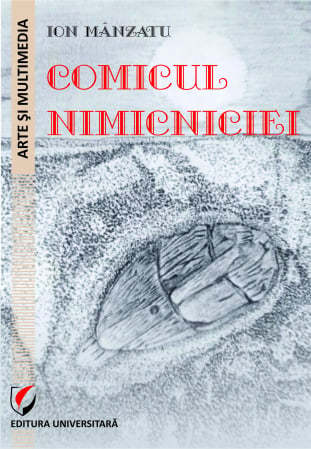ISBN: 978-606-28-0788-7
DOI: 10.5682/9786062807887
Publisher year: 2018
Edition: I
Pages: 150
Publisher: Editura Universitară
Author: Diana Metiu
- Description
- Download (1)
- Authors
- Content
- More details
- Reviews (0)
The era of industrialization brought after it a consumerist society and an over-production which, together, generated a new raw material for modern art: industrial garbage and the reaction of modern man to its destructive effects. Together, the two elements led to the emergence of a new art form - garbage art, "junk art" or "trash art".
"Trash Art" is that art form that can be inscribed in any style or artistic current provided that the materials it uses are considered unusable by others, so garbage, can be combined with any other materials - from the unconventional to those considered classic. The range with which an artist can work is very wide and leaves room for an infinite number of interpretations.
When we say junk / trash / garbage, it is very important not to imagine a basket full of repellent, smelly debris. To understand the concept of "Trash Art" it is important to visualize all those insignificant things that we no longer value, we no longer find their usefulness, and we are ready to give them up, to throw them away, and which, if we change perspective and we would give free rein to imagination and creativity, maybe we would be able to create other things, if not useful, if not beautiful, at least interesting. True creators are those who can elevate to the rank of art what the common man does not dare to comprehend with his own mind.
-
TRASH ART. De la banal la arta
Download

DIANA METIU is a doctor in visual arts, with over 20 years of experience in the field of public communication and image consulting.
Diana Metiu works as a business and life coach, generating personalized personal development programs, as a numerology expert and holistic drawing specialist.
At the same time, Diana Metiu is the moderator of the show "What We Don't Know We Don't Know" from the 6TV television station and of the show "Creative Born" from Radio Gaia Romania.
As a professor at the Faculty of Arts, Diana Metiu teaches courses, conferences, camps and workshops on art history, aesthetics, plastic language, communication, creativity, innovation, public discourse, coaching, numerology and femininity.
As the initiator of the "Creative Born" community, Diana urges and motivates those around her to practice your creative mind and their innovative abilities, so that the results obtained are proven and spectacular.
ARGUMENT - Why "Trash Art"? The negative effects of the consumer society on our planet counteracted by visual art, as a means of social responsibility, with ecological implications and determinations manifested by a relevant artistic current, namely "Trash Art" / 9
CHAPTER 2
DEFINITION - What is meant by "Trash Art" or art from garbage, more precisely from recyclable, recycled and readymade materials or the path taken by garbage from its creation to the transformation into art, materials, technological processes and techniques through which it becomes art / 20
CHAPTER 3
HISTORY - Who, what, when, where and how contributed to the metamorphosis of garbage / 25
3.1. The reference year in which the term "Trash Art" was made official as an artistic current - 1916/27
3.2. The use of waste in the "plastic arts" before the officialization of the term "Trash Art / 48
3.3. The evolution of "Trash Art". The use of waste in the plastic arts after the official term / 53
3.4. The evolution of the "Trash Art" current in Romania / 71
3.5. Plastic analysis - "Trash Art" - a new plastic language; elements that make the difference between the compositional, value, chromatic and superficial structure of a “classic” visual art work and that of a work made of waste / 80
CHAPTER 4
ASPECTS, DETERMINATIONS, ECOLOGICAL, ECONOMIC, SOCIAL, EDUCATIONAL IMPLICATIONS OF THE ARTISTIC CURRENT "Trash Art" - Reduction, Reuse, Recycling, Recovery, Reinvention, Respect / 90
4.1. Recycling - global and national aspects / 90
4.2. Educational campaigns of O.N.G.s and commercial companies, in Romania and in the world / 102
CHAPTER 5
TECHNOLOGY RECYCLING PROCESSES / 115
5.1. Garbage collection / 115
5.2. Garbage sorting by types of materials / 117
5.3. Recycling / 119
5.3.1. Paper and cardboard recycling / 119
5.3.2. Wood recycling / 124
5.3.3. Metal recycling / 126
5.3.4. Plastic recycling / 130
5.3.5. Rubber recycling / 134
5.3.6. Glass recycling / 138
5.3.7. Textile recycling / 143
5.3.8. Recycling of reinforced concrete and cement / 146
5.3.9. Recycling of electrical devices and batteries / 147
BIBLIOGRAPHY / 149
Ever since the negative effects of the consumer society and the technological progress on our planet have been ascertained, solutions have been sought and even found to improve the health of the Earth. There is a continuous process of designing and implementing programs capable of reinventing the society in which we live. The level of awareness of these important aspects is growing at a good pace and is making its mark on the way people of this century are transforming, along with the world around them.
There are growing concerns about accessing the world's natural resources, but in a non-invasive way, unlike anything mankind has done so far. The interest in green energy, obtained from the exploitation of water, wind and sun, is reaching higher and higher levels, not only among scientists, but also among business people. They are equally interested in developing processes for creating energy from any other source, as inexpensive as possible.
The energy obtained by gasification of garbage is one of the newest and most interesting technologies from a financial point of view. At the same time, it solves one of the great problems of the planet - the lack of space for waste storage. All other elements of the garbage, those that do not burn or gasify, carry with them the potential of new objects. The intelligence and talent of modern man have found processes and techniques for amazing transformations. Thus, materials considered by many unusable, become raw material for new products. Reuse, recycling, reinvention are words that are starting to be part of our usual vocabulary but also that of visual artists. The history and civilization of a society have always been reflected in art, and this is also the case of the age in which we live. All these remodelings could not fail to be creative - from simple decorative elements to real works of art.
Just as a block of marble or a tree trunk speaks to the sculptor, the artist, suggesting new forms, ideas, and purposes, so various elements that have become "garbage" can suggest to a truly creative mind new, unconventional forms, ideas, and purposes. and surprising. Today, creativity is demanded more than ever, and new "materials" generate the opportunity to give birth to truly original works of art. With the exception of biodegradable materials, the rest form a multitude of unconventional elements that subject artists who have resorted to this art form to real challenges, while providing them with unlimited sources and forms of expression. Recycled or just reused, paper, wood, plastic, glass, metal, textiles, even reinforced concrete, cement, batteries and electronic and household appliances can come together in graphic compositions, with a new artistic expressiveness and conveying a new plastic message.
All these elements that the world throws away, considering them unusable, so garbage, in the eyes and hands of some become art. On the other hand, in some works of art, some people only see garbage. So what's the difference? This, like beauty, exists only in the eyes of the beholder. However, everything is relative and subjective. The simple action of expanding our horizons to accept these unique ways of creation can give us an extra visual joy, which others are not able to perceive.
"Trash Art" or "garbage art" has existed for many years and seems to have regular returns in the interest and taste of the art-consuming public. However, only eccentrics or artists with a high degree of celebrity are validated in the position of creators. An ordinary person cannot be considered an artist when he reuses an object that would otherwise have become garbage, giving it a new status and a new value, unless he can integrate it into the classical formal, value and chromatic compositional structures of plastic art or it can overturn, mix, even create a spectacular but very well thought out plastic chaos.
Going beyond the idea of the status of the creator, if we look at the world around us, we can observe the artistic potential or otherwise, in all the things we throw away every day. In most third world countries, looking for garbage is - for a part of the population - a way to get what you need for daily living. Although for some garbage is only a means of subsistence, for others it has become a way of substantial gains by modeling the elements thrown in the garbage.
In some locations attractive to tourists and intensely promoted, materials sold under the label of "traditional" or souvenirs often have recycled elements in the structure. For example, beverage cans - beer or aluminum juice can become parts of jewelry. Even children's toys have a rethinking of the structure. The mentality of the people in those regions is that everything can be reused, and new uses can always be found and, certainly, this approach would deserve to become global.
The only limits imposed by "Trash Art" are those of the imagination. The functionality of reused or recycled materials has long been known, but insufficiently promoted. Metal packaging, for example, can also be admired as household items or birdhouses. Boxes or clothes can become new places for storage, charming cabins for children or clothes for animals, etc. The element that cannot be missing is the desire to experiment and test various variants.
Many of the school and university projects have begun to be designed in such a way as to stimulate the imagination of those involved and orient them towards recycling, reuse and re-approach of art. The secret of those who choose to create in the style of "Trash Art" and achieve success in this way is to take an innovative, free and unprejudiced look at the world around them. They visit landfills, thrift stores, garage sales, flea markets or vintage fairs. Some have created an impressive home wallpaper from materials purchased from such places, shard mosaics, broken pots and glasses, cutlery wind chimes adapted to make a pleasant noise, others have turned children's toys into furniture and the list can go on.
The works that fall into "Trash Art" can be designed for entertainment, recycling, pollution prevention, environmental protection or launching an alarm signal for the state of ecological degradation in which our planet is. So, this type of art can have both a purely aesthetic purpose and an educational and inspirational one.

6359.png)
![Trash art. From the banal to Art - Diana Metiu [1] Trash art. From the banal to Art - Diana Metiu [1]](https://gomagcdn.ro/domains/editurauniversitara.ro/files/product/large/trash-art-de-la-banal-la-arta-242-561834.jpg)
